If you have an electric bike, then you know that the battery is a big part of what makes it run. But, there’s a lot of confusion surrounding how, when, and where to recharge a bike battery.
That’s why it’s important to take care of your battery and charge it properly.
To help you take good care of your electric bike battery, I’m sharing with you the details of these 16 battery charging tips. This article (and video) will tell you everything you need to know to properly charge your e-bike.
Follow these tips to ensure that your e-bike battery lasts a long time!
Tip #1: Always Charge Your Electric Bike Battery on a Clean, Flat Surface
Your battery should always be charged on a clean, level surface. Make sure it’s not sitting in direct sunlight or next to anything that could overheat and cause the battery to fry.
Another recommendation: It never hurts if you press the power button for about 30 seconds before plugging your charger into the outlet; this will help calibrate your cells so they charge more effectively.
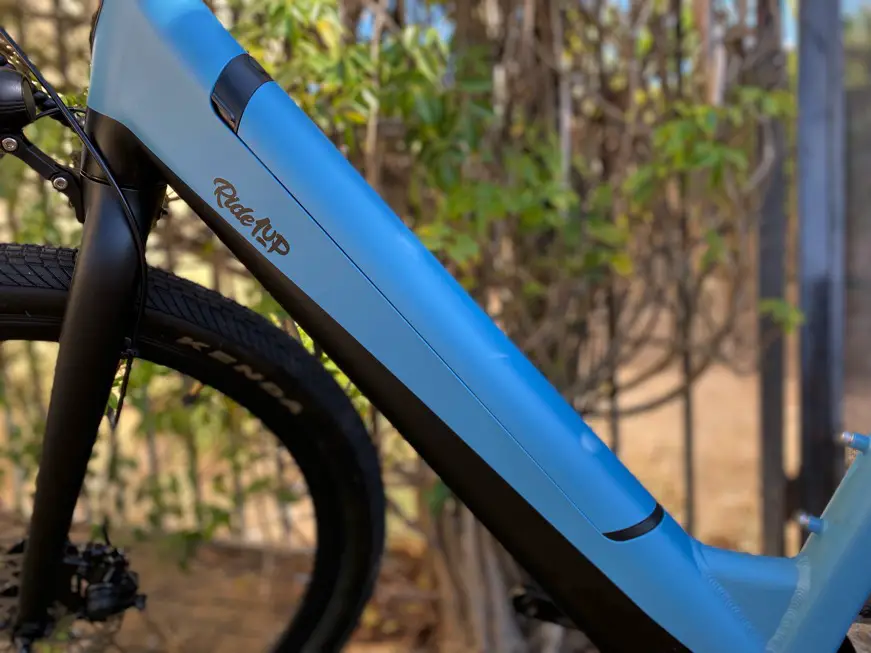
Tip #2: Keep The Bike Battery Away From Water
Never charge your battery near or in water. This will cause buildup and, eventually, corrosion that could lead to a short circuit! If you have limited space in which to charge, you can plug the charger into an extension cord. This is best if the original outlet is close to a sink, toilet, or shower.
If there is any chance of precipitation while charging your bike’s battery, then cover it up with something like a plastic bag or tarpaulin before plugging anything in. It may seem wasteful at first but if rain hits even one cell then all cells are affected and can reduce potential lifespan severely!
Tip #3: Use the Right Charger for Your Type of Electric Bike Battery
Different battery types require different chargers depending on the voltage and amps (or Watt-hours). Many electric bike batteries are lithium-ion and come with 36, 48, or 52 Volts and from 14-15 amps.
Lithium-Ion Chargers: These are very convenient because they plug into a standard 110V outlet just like other small appliances. Further, they don’t have any wires coming out of them – all wiring is inside the charger itself!
To charge your electric bike battery, you’ll need a charger that matches the exact specifications of your battery. Always read the instruction manual before charging your e-bike’s batteries for any safety precautions that may apply to your specific make/model.
And here’s a “pro tip”… If other members of your household have an e-bike with similar-looking chargers for the batteries, mark each one clearly as to which bike it goes to. You can easily damage the battery if you plug it into the wrong charger!
My husband, Marc, and I do this for our Rad Power e-bikes even though our chargers have the same specifications (this way we’re responsible for taking care of our own).
Replacing a Battery Charger
If you need to replace (or add a second) your battery charger, here’s what to do:
- Look for your battery volts and amps on the back of your charger, in your e-bike’s user manual, or on their website
- Review the manufacturer’s instructions about what is compatible
- Buy directly from the manufacturer (plan to pay more) or search on Amazon for a battery charger with the exact specifications.
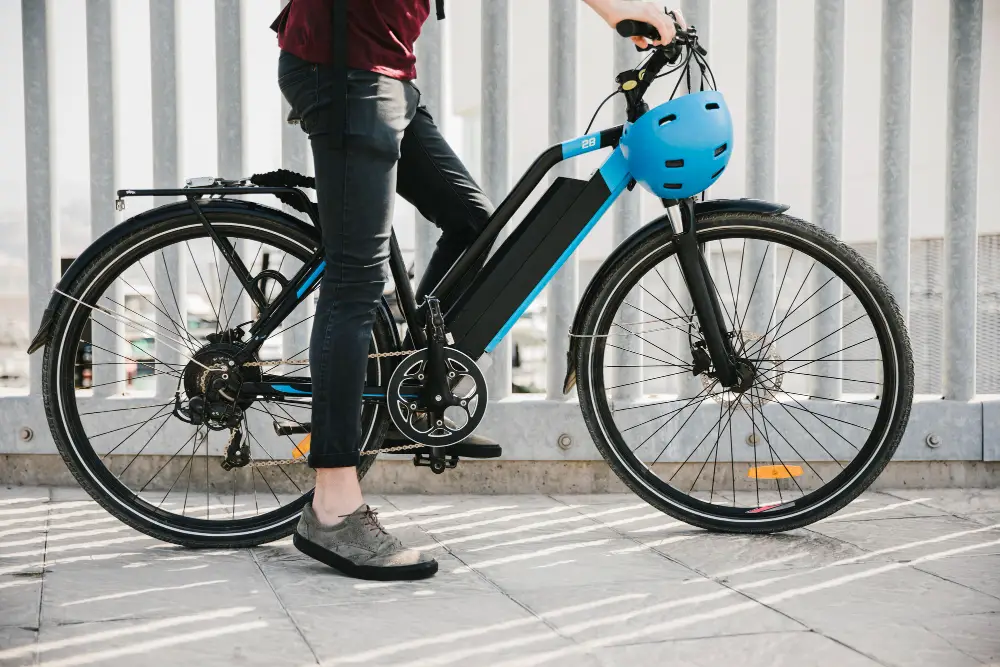
Tip #4: Charge it Fully the First Time
If you’re charging the battery for the first time, you should charge it for at least 12 hours. Plug it into the battery overnight and it should be ready to go in the morning. This will make certain that every cell has received a charge.
The truth is, when batteries are first used, they are coming out of “hibernation” or sleep mode (just like a computer). So they need a substantial first charge to tell them that it’s time to work. From the first charge on, the battery cells know how to charge when needed and will do just that. They’ll charge when low but stop charging when the battery is full.
Charging your e-bike’s batteries fully the first time will also give you a good starting point to evaluate how long your battery will last while riding.
Just an FYI… a much older electric bike battery will take longer to charge because it holds less energy. If you have a battery that’s already a few years old, pay attention to the charging time.
Tip #5: Super Important Tip: Check Your Battery Level After Every Ride.
Check the battery’s charge before and after every ride:
-Check it before to make sure you have enough juice to ride the distance intended.
-And take a look at it afterward to determine whether you’ll need to charge it before the next ride… and to make sure it hasn’t drained to a level below 30% if you’re not going to ride it for a while.
Do you need to charge your battery after every ride?
Most likely, you do not need to charge your e-bike after every ride… and it could possibly hurt the battery if you do so. How often you need to recharge the battery varies depending on a few factors:
- how many miles are traveled per day
- the weight of the rider
- how heavy the load is that you’re carrying
- how many hills you’re climbing
- what level of pedal assistance you’re using
In general, more power is required when climbing hills, carrying heavier loads, or when pedaling less.
A good rule of thumb is that most riders will only need to recharge their e-bike’s batteries once per week – although this could vary between models and brands.
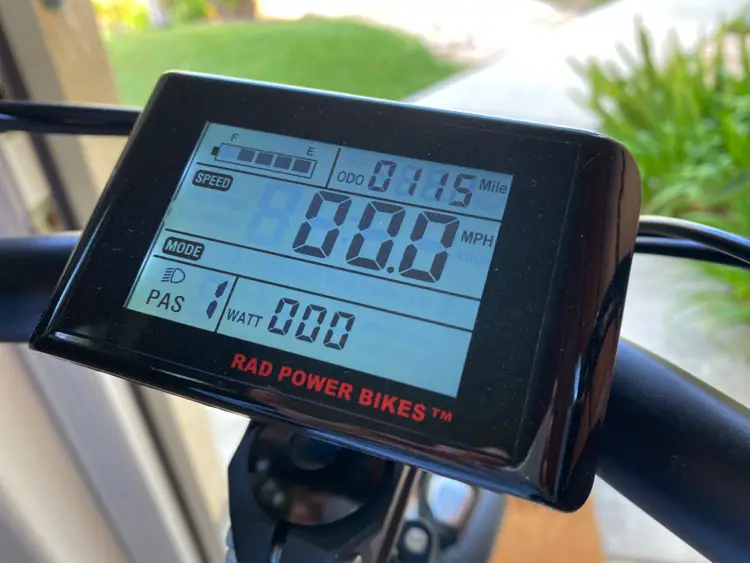
How to Check Your Battery Usage (example):
I have 5 “bars” of battery power showing on my e-bike’s controller. Your electric bike might show your battery level in a different way, but here’s the idea.
After a great deal of riding experience, I know that I can ride (with modest hills) for 10 miles and only lose one bar (if that!). I often go much further one one “bar” of charge by shifting into higher gears and decreasing the amount of motor assistance I use.
But for this example, using one charge bar (shown on my e-bike’s LCD controller display) tells me that I’ve used maybe 15-20% of my battery power in one ride. From this information, I know I can easily take two more 10-mile rides in the same week before thinking about re-charging my battery. This puts me on a once-per-week charge cycle in general.
So, just know that understanding how often your battery needs charging comes with time and personal riding experience.
Check your battery usage with your electric bike’s controller.
Tip #6: Charge Your Electric Bike Battery Often for the Best Performance
Most newer lithium-ion bike batteries need charging regularly.
So, if you are riding your electric bike 3 times per week and you see your battery decrease by 50-60% at the end of your third ride, then this would be a good time to charge it.
Think of it like a car battery. If your car sits in the garage for several weeks without being driven, it probably won’t start when you decide to drive it again. This is because the battery hasn’t been used.
But, of course, you can’t charge your e-bike battery if it isn’t being used often enough. Given this charging issue, it’s best if you get out and ride at least a couple of times per week.
I suggest riding your electric bike as a fitness goal or at least a stress reliever (I use my Rad Step-Thru for both). Not only will you be taking care of your battery, but you’ll also be taking good care of yourself!
To help you get started, read my guide on electric bike fitness.
Tip #7: Charge Your Electric Bike Battery Fully (now and then)
As above, if you don’t ride your e-bike often enough, then you won’t have as much opportunity for charging. And you might think you can just “top off” your battery charge once you get around to riding again.
However, it is a good idea to give your battery full charging every now and then. Once every 2-3 weeks should do it. That’ll give the battery a chance to balance its cells and increase its long-term capacity.
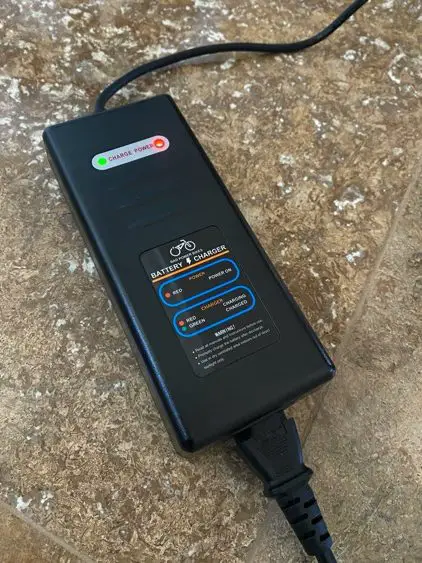
Tip #8: But Don’t Overcharge Your E-Bike Battery!
This may seem a little confusing now that I’ve suggested that you charge your e-bike regularly (have you considered solar charging it?). But you can still give it regular charges without overcharging it.
Overcharging means that you either:
- Have left your battery attached to its charger for days at a time, or
- Continuously, and intentionally, recharge it every time the battery has been discharged by only 5-10%. For example, it’d be like taking a 5-mile ride every day and then attaching it to the charger when you get home… every night.
Here’s what happens when you overcharge your battery: If you leave the battery plugged in for a long time period, it’ll slowly discharge naturally. Then your charger will decide that the battery needs to be charged again. So, your battery only gets mini charging cycles, which wears it down more quickly.
Therefore, if you happen to forget all about your new Lithium-Ion charger plugged into an outlet while you go on vacation for 2 months, your battery will suffer.
This is the reason you don’t want to overcharge the battery: You’re depleting its life more rapidly and you’ll have to replace it sooner!
find out what e-bikes have the longest range!
Tip #9: Don’t Store Your E-Bike Battery Fully Drained
Storing your battery without a charge is another way to wear down the cells prematurely.
You need to store your e-bike’s battery with at least a 50% charge if it’s long-term, say 3-6 months. This will ensure there are no surprises when you take out your ebike again in the spring or summer.
Read this article to learn how to store an e-bike safely.
Tip #10: Keep Your Battery Charged to 80-90% if You Ride Frequently
Even if you ride several times per week, you don’t need to (and probably shouldn’t) charge your battery to its full capacity. This can actually put stress on the battery. In other words, you’d be overworking it.
Charging to 80-90% is generally the way to get the most out of your battery, for the longest period.
Of course, if you intend to go on a ride that could reach the mileage limits of your battery model (somewhere between 20 and 100 miles, depending on the battery), then go ahead and charge it to 100% before the ride.
This won’t do any damage to the life of the battery since you’ll be discharging it naturally over the course of a long ride. And you certainly don’t want to get stuck without charge during your ride just because you’re concerned about the overall life of the battery.
In my humble opinion, that’s like keeping plastic over a nice sofa to prevent stains… it stays nice for longer but you never enjoy the comfort of the sofa.
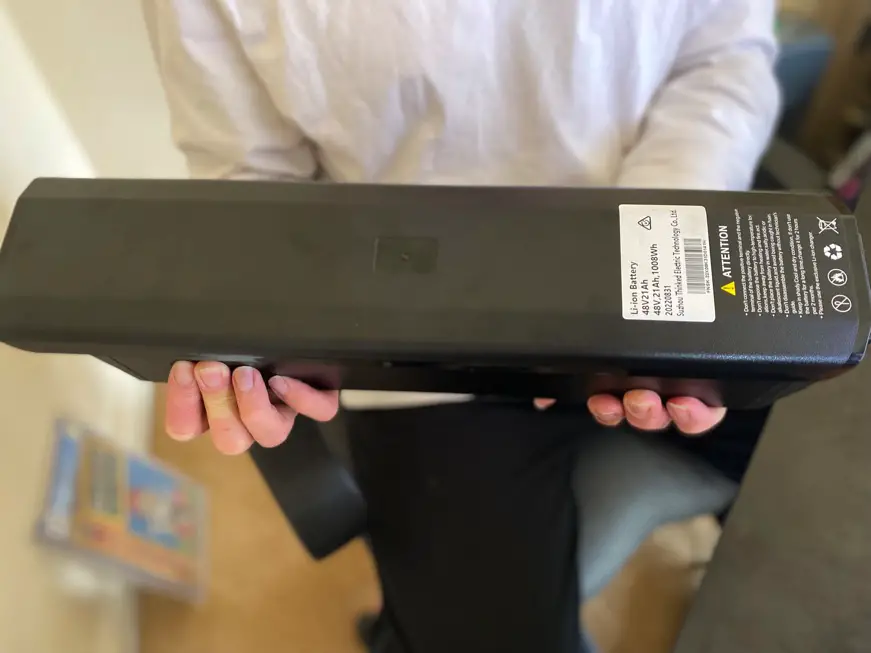
Tip #11: Keep Your Battery at a Low Charge if Not Riding Regularly
Ideally, keep your battery charged between 40% and 70% of its full charge when you won’t be riding for a while.
If you store your battery with a significant charge, then the maintenance cycle will be shorter. Keeping it fully charged is not good for long-term storage and can shorten its lifespan.
You always want to keep it partially charged when storing for longer than three months so that there’s some life left in the cells.
What happens if you store your electric bike battery without any charge? You may compromise the performance and reduce battery life.
Tip #12: Don’t Let Your Battery Experience Extreme Temperature Changes
The best temperature range for your electric bike battery is between 60 and 70 degrees Fahrenheit.
That’s approximately the same temperature that most of us (and our pets) feel good in. So use yourself as a gauge… if it’s way too cold or hot for you to be comfortable in, then your battery won’t like it either! Excessive heat or cold can degrade the cells and decrease the life of the battery.
However, I know it’s impractical to keep your battery between 60 and 70 degrees all of the time, like when you’re out riding or you don’t have air conditioning during a heatwave. But you should entirely avoid charging your battery when temperatures are below freezing (36 degrees Fahrenheit) or above 110 degrees Fahrenheit.
Learn how to take care of your e-bike in cold weather!
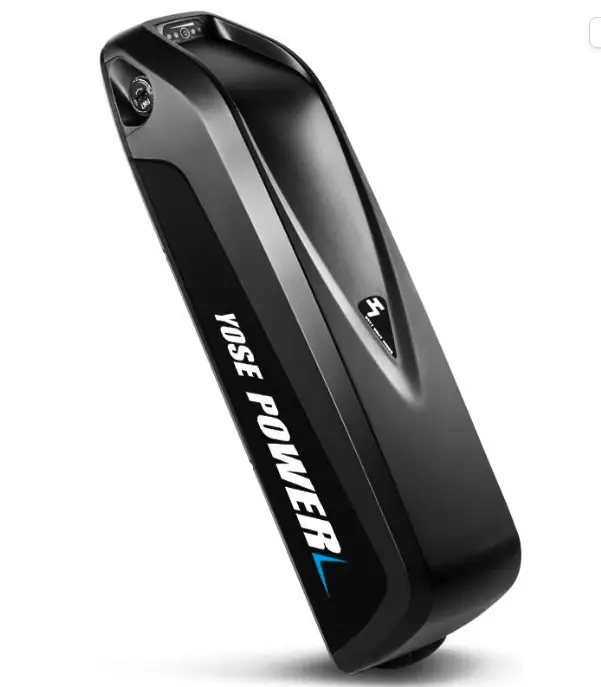
Tip #13: Buy a Second Battery Charger to Keep at Work or School
Instead of stressing out over not having enough charge to get home from work or school, buy an extra charger that fits your battery. Leave the charger at work or in your backpack or briefcase in case you need to charge it to get back home.
Buying an extra charger from Amazon will cost you $20-$100 as opposed to an extra $500 or more for an additional battery!
Tip #14: Take the Battery Off the Bike to Charge (every 1-2 months)
Some electric bikes allow you to charge the battery while it’s on the bike. This is certainly convenient if you can park your bike near a good charging outlet.
However, one way to take good care of a battery is to remove it from the bike every now and then.
Why is this a good idea? You can check to make sure the connections look clean and free from gunk or corrosion. Moisture, debris, and even sweat can get lodged in there, causing a bad battery connection.
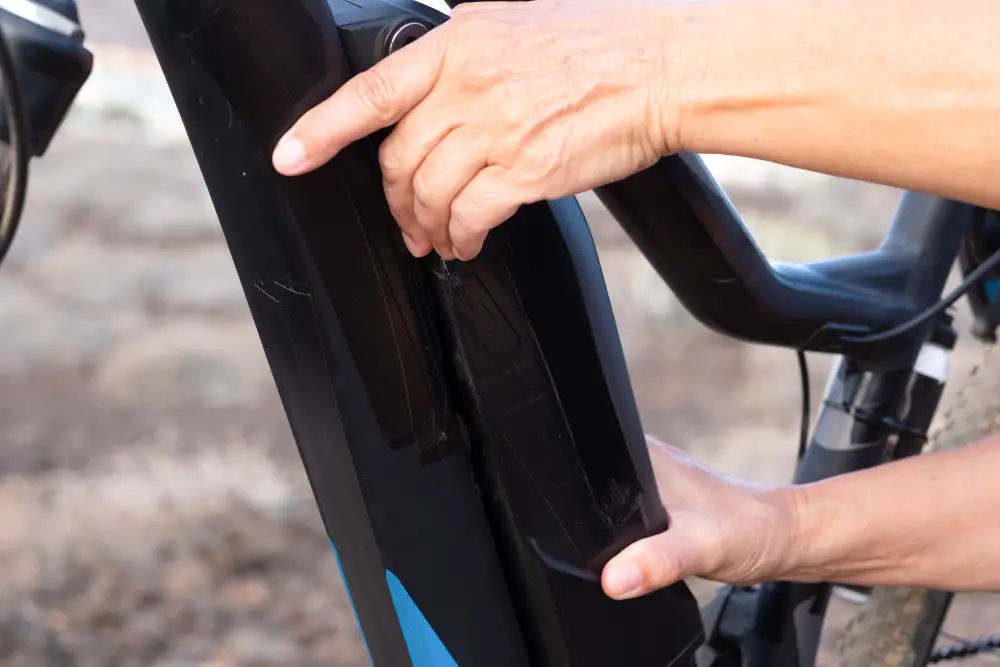
Tip #15: Test Your E-Bike Battery If It’s Not Charging
If you have any concerns or doubts about the quality or battery life, you should test it. You won’t want to get stuck out on a trail or during a long-distance ride without a working battery (e-bikes are heavy to ride and push without one).
Before testing your bike battery, give it a full charge. Make sure it’s disconnected from your electric bike. Then attach a voltmeter or multimeter to both sides of the battery. Doing so will give you a voltage reading that may confirm your suspicions about having a poorly working battery.
However, if you discover that there isn’t a problem with your battery, then you may want to check the bike’s controller. And, if you get sparks or feel a shock, put down the battery and consult your electric bike manufacturer for help! Although they can be pricey, it’s worth buying a new one (Amazon) if yours is making you nervous.
Tip#16: Know the Typical Battery Problems and Solutions
Thankfully, there are fairly common battery problems that you can watch out for and prevent.
The most common problems include the battery failing to charge and it not running as long as it used to, or holding its charge. Here’s how to diagnose and fix these common issues. In general, it isn’t common for batteries to suddenly explode! Better yet, if you take good care of your electric bike battery, you won’t ever have to deal with a problem (until it’s time to replace it)!
Battery Charging Wrap-Up
I hope you found these electric bike battery charging tips helpful!
Follow these tips to keep your e-bike battery charged and ready to go anytime you want to ride. These charging tips should also help you take the best possible care of your battery so that it lasts as long as your brand manufacturer says it will… or maybe even longer! Buying a new battery is expensive!



